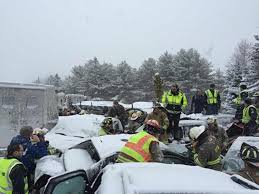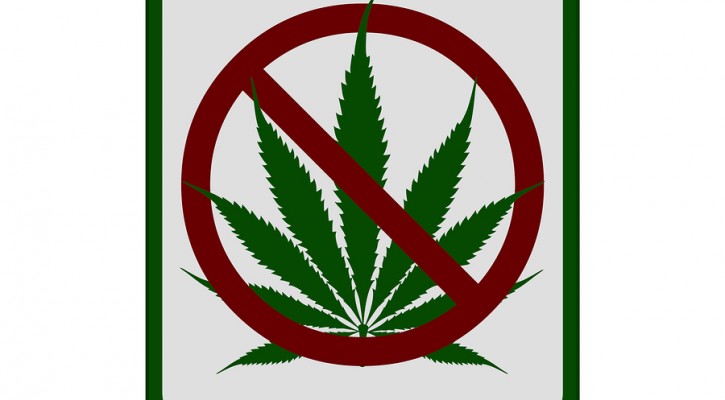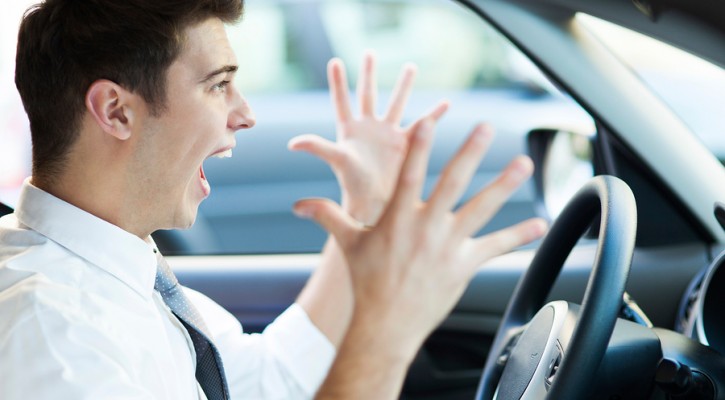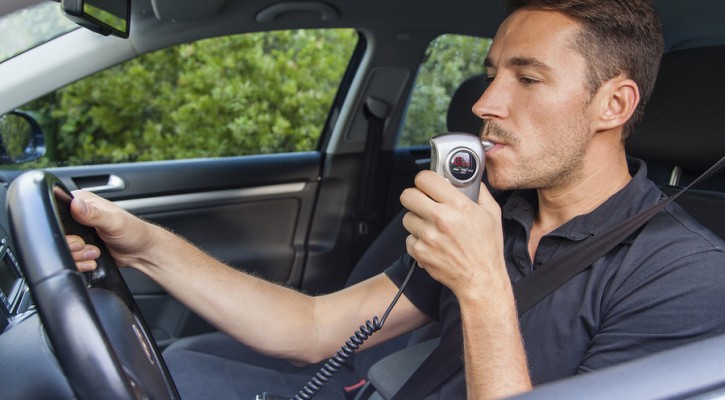Feds Urge Parents To Make Tweens Buckle Up
March 13, 2015
It’s hard to get tweens to buckle up so the federal Department of Transportation (DOT) and the National Highway Traffic Safety Administration (NHTSA) are trying to do something about it. Citing alarming statistics of tweens (ages 8 to 14) who were killed because they weren’t wearing a seat belt, DOT and NHTSA announced a new campaign called “Never Give Up Until They Buckle Up.”
Parents who would never dream of bringing their newborn home from the hospital without a proper car seat and who taught their toddlers that the car wouldn’t start until everyone was buckled in seem to give up on tweens. With the rush-rush lifestyle of many families and so many short trips to school, practice and the store, it sometimes seems too much of a hassle to fight the seat belt fight with tweens.
Tweens are entering that age where they are starting to feel grown up. They’re experimenting with limits and testing the rules. They often feel like they’re too old for seat belts and, in order to show their independence, don’t bother to buckle up. That can be a deadly mistake.
According to NHTSA, “Over the past 5 years, 1,552 kids ages 8-14 were not wearing seat belts when they died in a crash, and one in four of those kids were age 14. That’s a trend that has to stop now.”
Among other important information, the Never Give Up Until They Buckle Up website has information for parents on:
The tween years are the time when it’s more important than ever to stress how important the rules are if tweens want to live long enough to become teens.
Read more: Don’t Give Up Until They Buckle Up

75 Car Pileup Caused by High Speed
March 5, 2015
Investigators have determined that most drivers Involved in a 75 car pileup on I-95 near Bangor Maine last week were ignoring the posted, lower speed limit and driving too fast for conditions. As a result of the crash, seventeen people were transported to area hospitals, two in serious condition.
Interstate highways in Maine are equipped with flashing, hazardous weather speed limit signs. When road conditions warrant it, the speed limit can be lowered to a safer posted speed. The signs are also equipped with speed detectors that can record the speed of vehicles on the road. Investigators looking at the recorded data found most drivers were traveling an average of 10 mph above the posted speed of 45 mph. At least one driver was traveling at a speed of 73 mph.
The combination of snowy weather, darkness, and speed led to the biggest multi-vehicle pileup in Maine’s history.
Speed limit signs are posted for ideal conditions. Drivers have a responsibility to adjust their driving speeds when weather or other conditions warrant.
Read more: Speed led to 75-car pileup on I-95, speed limit sign recordings show

New Roadside Tests For Drugs
February 18, 2015
New roadside tests for drugs are being evaluated by police departments around the country and are showing promise as an effective tool for determining whether or not a driver is under the influence of drugs, especially the use of marijuana.
The problem with testing for the presence of marijuana, up to this point, is that blood or urinalysis testing checked for specific metabolites in the system to determine whether or not marijuana has been used. The drawback to these tests is that they could only determine marijuana use within the past few weeks, not that the user was currently under the influence of marijuana. Another issue was that blood and urinalysis tests can’t be performed at the scene of a traffic stop. The new roadside tests have apparently solved those problems.
The new roadside tests use an oral swab to collect a saliva sample that is placed into a portable analyzer. Test results are obtained in minutes and can detect up to seven different drugs. Results show that the person has recently used the drug and is currently under its influence.
In a recent study published in the Journal of Analytic Toxicology, researchers compared two different oral fluid analyzers. The results of the portable analyzer tests were followed up with standard drug detection tests to check for accuracy. The results showed the Dräger Drug Test 5000 to be more sensitive, especially for the detection of marijuana. The study’s authors stated that the oral fluid tests were more sensitive than the standard urinalysis test for detecting the presence of drugs in the system.
With more states legalizing marijuana and reports by police of greater numbers of stoned and drugged drivers, the new drug detection systems should be a welcome aid in in the prosecution of those drivers.

Do As I Say, Not As I Do Driving Culture In US
February 10, 2015
Do as I say, not as I do, seems to be the driving force among US drivers according to the AAA Foundation for Traffic Safety’s Traffic Safety Culture Index released this week. The survey of 2,705 US licensed drivers age 16 and older shows that most believe that certain driver behaviors are dangerous and a threat to other drivers but a large number admit to engaging in those same risky behaviors themselves.
Car crashes affect most Americans in one way or another. Among the survey’s respondents:
- One in ten have been seriously injured in a crash and almost one in five have been involved in a serious crash.
- Almost one in three had a friend or relative that was seriously injured or killed in a crash.
When asked about certain traffic issues, survey respondents who felt they were a somewhat or bigger problem than three years ago were as follows:
- Aggressive driving – 61.3%
- Distracted driving – 85%
- Drunk and drugged driving – 41.6 and 45.6 respectively
The do as I say, not as I do factor
When it comes to their personal driving behavior the survey showed:
- 54.7% said red light running was a serious threat and 72.7% said it is completely unacceptable. However, more than one-third (35.6%) admitted to running a red light within the past 30 days.
- 45.2% of drivers felt that speeding at or above 10 mph over the posted speed limit in residential zones was a serious threat and 84.4% said it is completely unacceptable. However, almost half (43.5%) admitted that they done it within the past 30 days.
- 78.6% of drivers felt that texting was a serious threat and 64.6% said it is completely unacceptable. However, more than one-third (36.1%) had read a text or email and more than one-quarter (27.1%) had typed one while driving within the past 30 days.
- 45% of drivers felt that drowsy driving was a serious threat and 81.3% said it is completely unacceptable. However, almost one-third (29.4%) had done so within the past 30 days.
Cell phone use while driving
Many Americans still don’t realize that, when it comes to cell phone use, the distraction doesn’t come from holding a phone to your ear but from the phone conversation itself. Among survey respondents:
- 65.7% of drivers felt that use of hand-held cell phones is unacceptable while almost the same amount (65.4%) felt that use of hands-free cell phones is acceptable.
- 46.4% of drivers felt who use speech based in-vehicle cell phone systems don’t believe that the calls are at all distracting.
- 89.3% believe that texting while driving should be banned.
- 67.8% support a ban on hand-held cell phones.
- 40.2% support a total ban on both hand-held and hands-free cell phone use.
For more information on the survey, read: 2014 Traffic Safety Culture Index

Drunk/Drugged Driving: Good News And Bad News
February 9, 2015
There’s good news and bad news from a study released recently by the National Highway Transportation Safety Administration (NHTSA). The good news is that drunk driving is down significantly but drugged driving is on the rise.
The National Roadside Survey, a survey conducted five times over the last 40 years, shows that drunk driving is down significantly since the last survey in 2007. The National Roadside Survey is a voluntary roadside survey conducted at points throughout the nation. Drivers are notified by signs leading to the survey site that the survey is completely voluntary and the results will remain anonymous.
According to the NHTSA survey, approximately eight percent of drivers during weekend night time hours were found to have alcohol in their system. Just over one percent of the drivers blew a .08 on the breathalyzer, the level at which drivers are deemed legally drunk in all 50 states. The number of drunk drivers in the survey was down by 30 percent since the last survey conducted in 2007 and 80 percent since the first survey conducted in 1973.
That good news was tempered by the fact that the number of drivers with drugs in their system that could affect their driving increased by almost 23 percent. The number of drivers with marijuana in their system increased by 50 percent.
The survey found that more than 15 percent of drivers in the survey tested positive for illegal drugs, a 25 percent increase over the previous survey. However, drugs that can affect driving aren’t just illegal drugs. Many drivers fail to realize that a number of prescription and over-the-counter medications can affect a person’s ability to drive safely. Overall, about 20 percent of drivers tested positive for some type of drug that could affect their driving abilities, up from 16.3 percent in 2007.
NHTSA credited anti-drunk driving campaigns with the lower rate of drunk driving. It seems that new campaigns are in order to reduce the number of drugged drivers on the road.
Read more: NHTSA Releases Two New Studies on Impaired Driving on U.S. Roads
